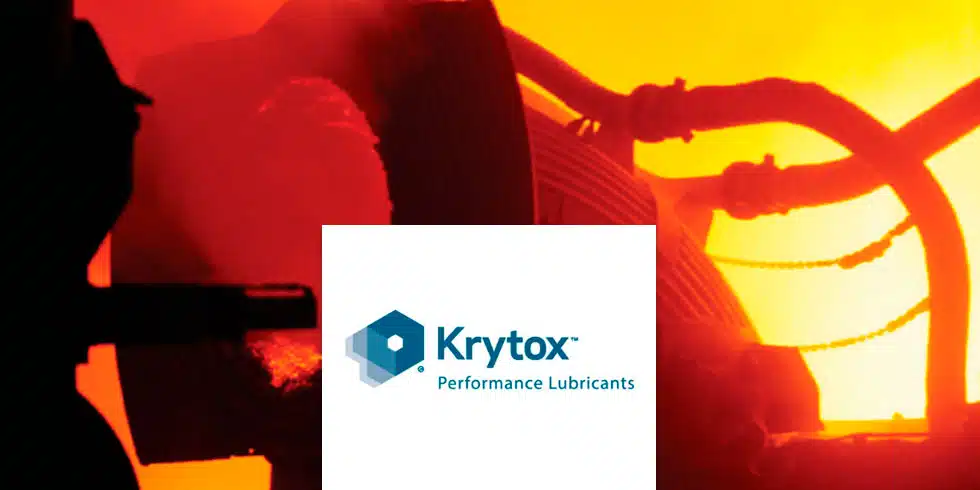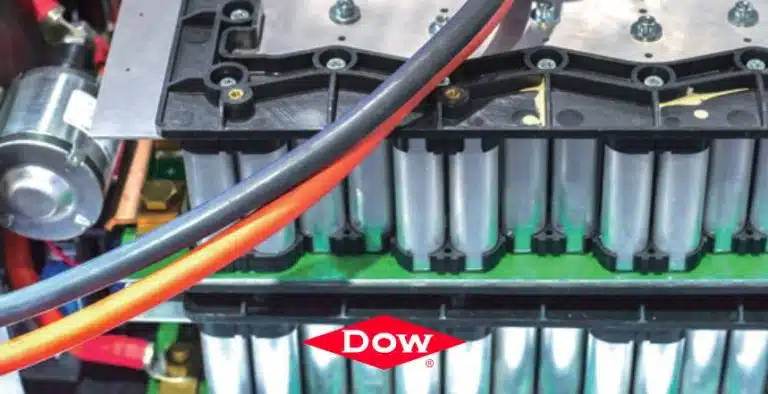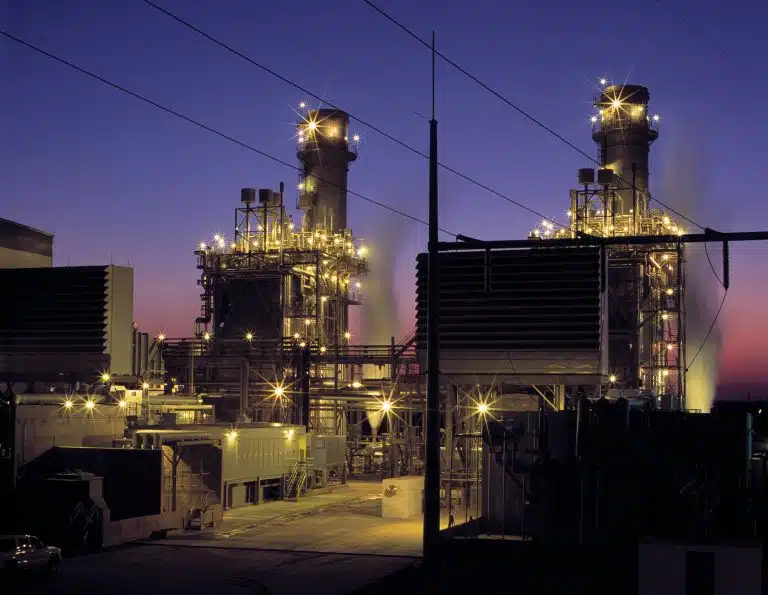What kind of lubricant would best suit your application needs? One that stands up to tough temperature extremes? One that can save you time and cost? Krytox™ lubricants do both.
Krytox Extra High-Temperature Lubricants (XHT) Product Information
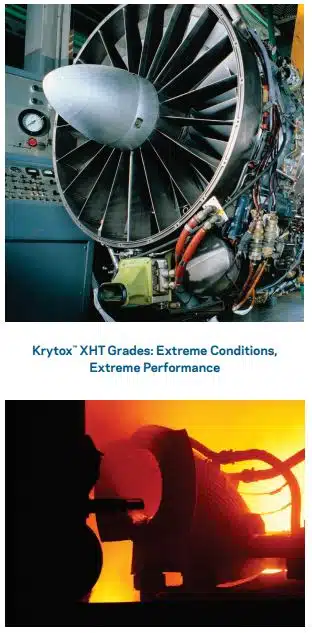 Selection of the best lubricant involves analyzing operating conditions and choosing from the many synthetic and petroleum-based products available today. While most petroleum products begin to degrade before 99 °C (210 °F) and cease turning at temperatures just below –18 °C (0 °F), Krytox™ fluorinated synthetic lubricants have operating ranges that are significantly broader (–70–316 °C [–94–600 °F]).
Selection of the best lubricant involves analyzing operating conditions and choosing from the many synthetic and petroleum-based products available today. While most petroleum products begin to degrade before 99 °C (210 °F) and cease turning at temperatures just below –18 °C (0 °F), Krytox™ fluorinated synthetic lubricants have operating ranges that are significantly broader (–70–316 °C [–94–600 °F]).
Krytox™ lubricants are more effective at even higher temperatures, regardless of operating duration. Using base oils, thickeners, and additives with chemistry designed to create high and low viscosity, these products are targeted for use solely in the very high-temperature range.
Available in several grades that offer anti-corrosion, extra bonding, and non-melting properties, these lubricants have applications in a variety of industries, including chemical, textile, tire, aviation, conveyor, glass, plastic film, non-woven manufacturing, and mining and metal processing.
High-Temperature Lubricant Greases
Because of its thermal stability and non-oxidizing characteristics, Krytox™ is a natural high-temperature lubricant. Krytox™ XHT greases are available with useful temperature ranges up to 360 °C (680 °F) for continuous use, with spikes to 400 °C (752 °F), when used in proper metallurgy with periodic re-lubrication.
Stability
Nonflammable
- Krytox™ lubricants contain only carbon, oxygen, and fluorine. Because hydrogen is not present, these products are nonflammable. They will not burn or support combustion, even in 100% liquid or gaseous oxygen.
Chemically Inert
- Krytox™ performance lubricants are not only resistant to oxygen, but are inert to virtually all chemicals used in a variety of industries. They are insoluble in most solvents, but are soluble in
highly fluorinated fluids and in some supercritical fluids such as CO2.
Thermal and Oxidative Stability
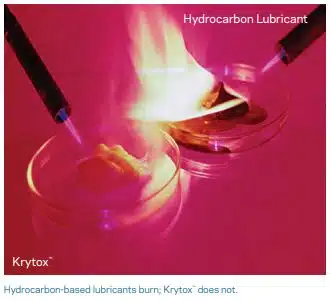

- The temperature at which thermal decomposition of Krytox™ oils takes place depends on the test method used and how the point of incipient deterioration is measured. By differential thermal analysis, deterioration occurs at about 470 °C (878 °F) in the absence of air. The isoteniscope technique shows an initial decomposition point of 355 °C (671 °F) as measured by excess pressure increase.
- At 355 °C (671 °F), the decomposition rate is approximately 0.03 wt% per day. At 399 °C (750 °F), the decomposition rate increases to 1.3 wt% per day. When tested under nitrogen for six hours at 371 °C (700 °F), Krytox™ showed no increase in neutralization number and no significant change in viscosity.
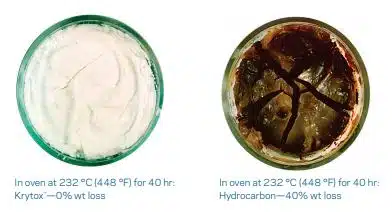
- The presence of air does not substantially lower the decomposition point of Krytox™ oils. During depolymerization, gaseous decomposition products are given off, and the remaining fluid is less viscous; but, no sludge or gummy deposits are formed.
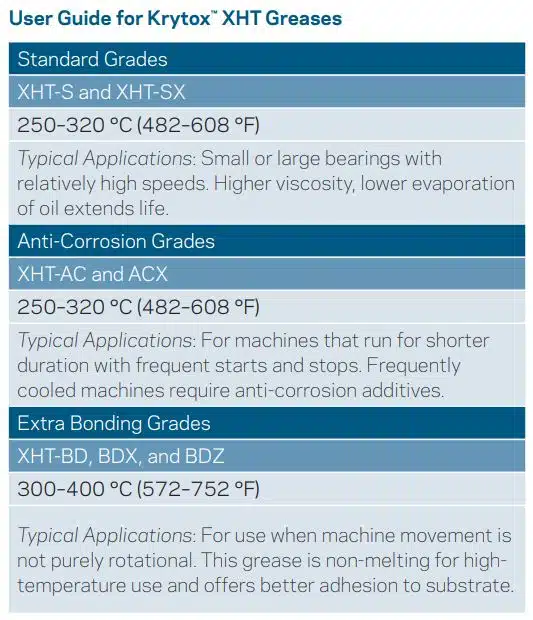
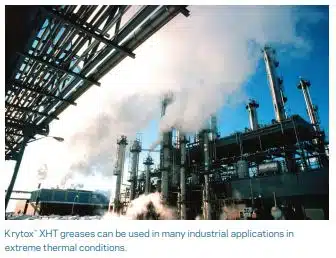
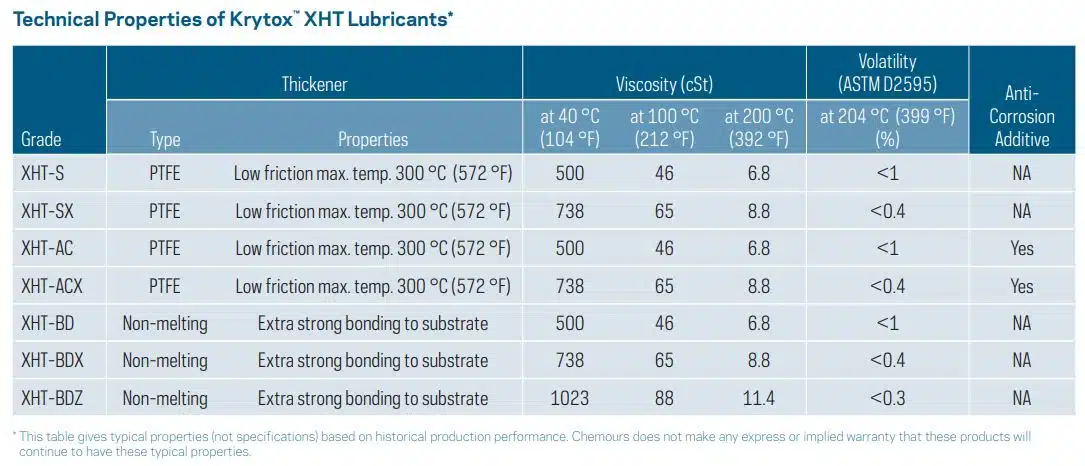
Font: www.chemours.com

